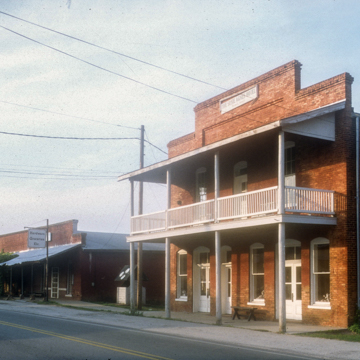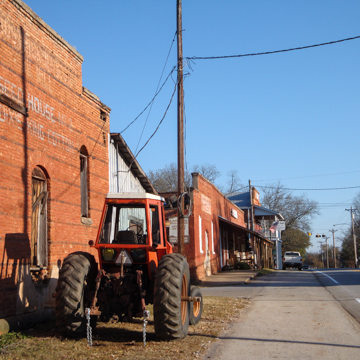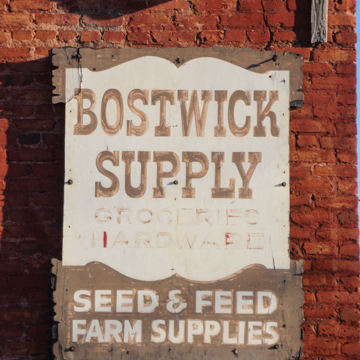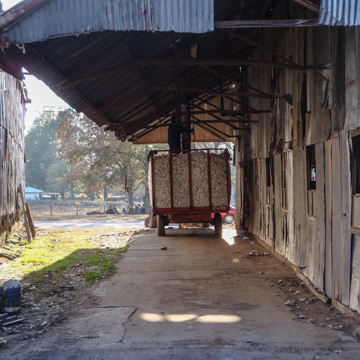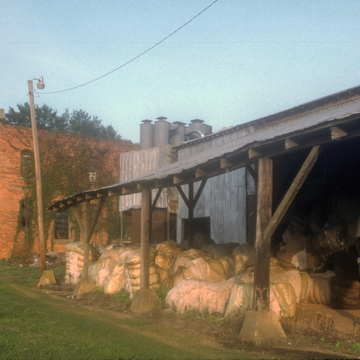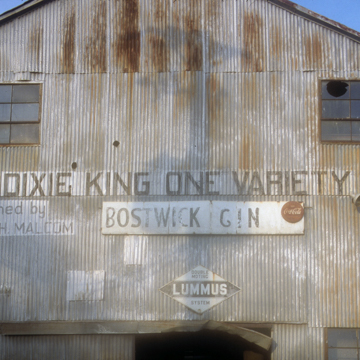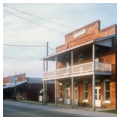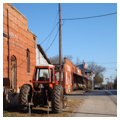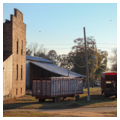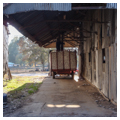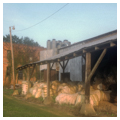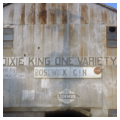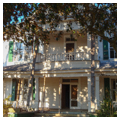The still-active cotton gin of Bostwick, Georgia, is part of a National Register Historic District that encompasses mid-nineteenth-century churches, a cemetery dating to around 1860, commercial stores, residences, and most notably, a group of industrial buildings and a small town hotel. John Bostwick Sr. established his Bostwick Supply Company in 1892, and in 1900 expanded it to form the Bostwick Manufacturing Company, which consisted of a cottonseed oil building, cotton gin, grist mill, warehouse, and guano (fertilizer) building. Between 1900 and 1915 the industrial complex grew to include one- and two-story brick and frame buildings clad in corrugated metal, with metal roofs, and shed additions, many of which sheltered bales of cotton. The two-story Susie Agnes Hotel, named for Bostwick’s daughter, was built about 1910, and remains a prominent structure of a main street that retains the character of rural road passing through a small town that is little more than an intersection.
With its brick construction, stepped parapet roof, and open, two-story, full-width porch, the Susie Agnes Hotel is the dominant landmark of the roadside complex. Just northwest along Bostwick Road, additional brick structures house the Bostwick Supply Company (a row of single-story brick structures with stepped parapet roof) and the Bostwick Manufacturing Company. Metal warehouses and storage buildings stand behind in a landscape dotted with cotton laden truck beds, baled cotton, and cotton fluff clinging to building walls, equipment, and the ground like a winter snow dusting. Surrounding farm fields were planted in cotton, although some sections later turned to peanuts, pine trees as a cash crop, or open fields for cattle grazing. Nonetheless, even today, the brick and corrugated metal buildings that form the core of the Bostwick cotton gin complex continue to house activities that have characterized the “king cotton” culture of rural Georgia for decades.
John Bostwick Sr. built his neoclassical house in 1902. It is a typical Georgia residence of the period, with a central hall on each floor and two rooms on either side, reflecting the tradition of the double-porticoed houses, based loosely on Thomas Jefferson’s first Monticello, which spread beyond the fall line throughout the rural nineteenth-century American frontier. Six years after building his own house, Bostwick subdivided property southwest of Bostwick Road and made it available for residential development for the town's white families. Residences throughout the Bostwick district date from the turn of the century to around 1950 and include Georgian and Queen Anne cottages, gabled ell and hall-parlor cottages, and bungalows with styles ranging from simplified Colonial Revival and Neoclassical to Folk Victorian and Craftsman.
The current operations at the cotton gin are an important reminder of the continuity of rural life in Georgia, an ongoing tradition of processing the cotton crop, and an activity that has little changed for more than a century.

